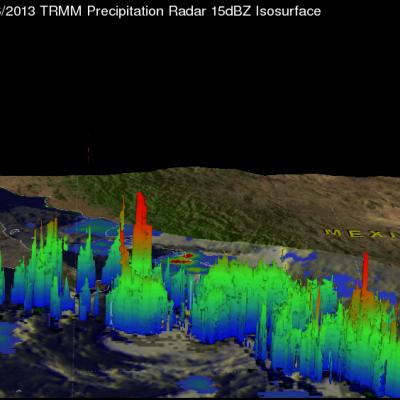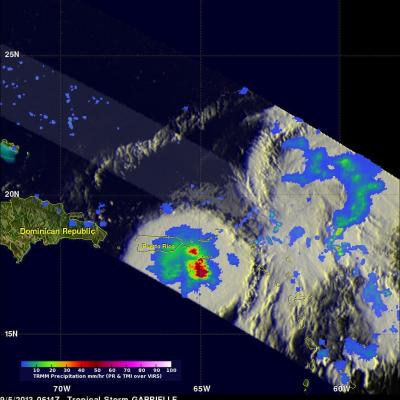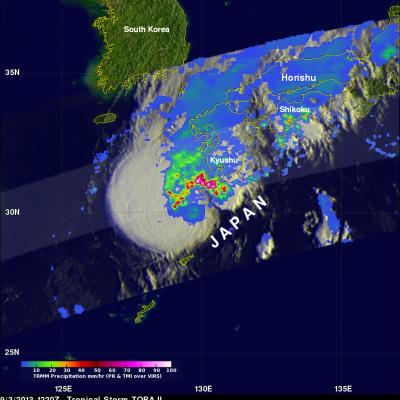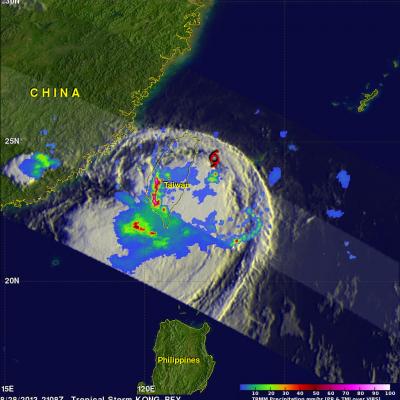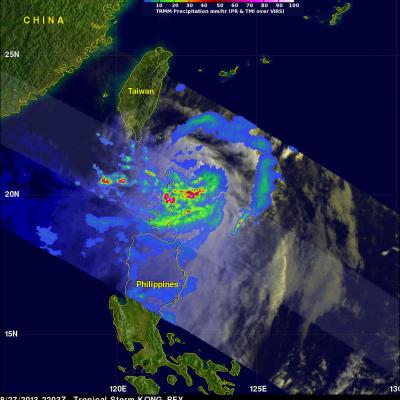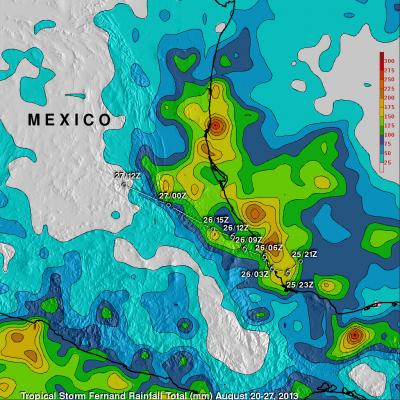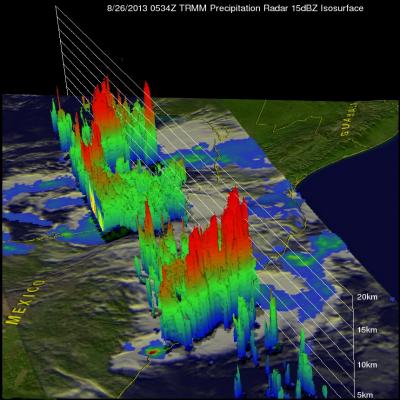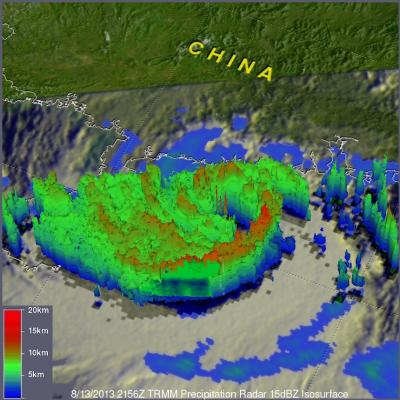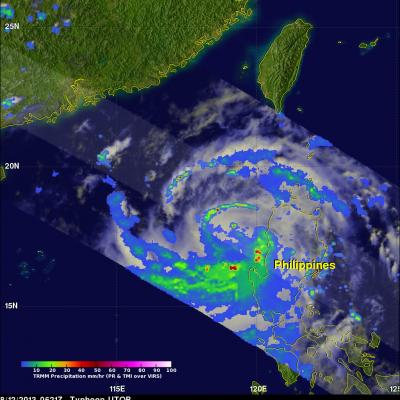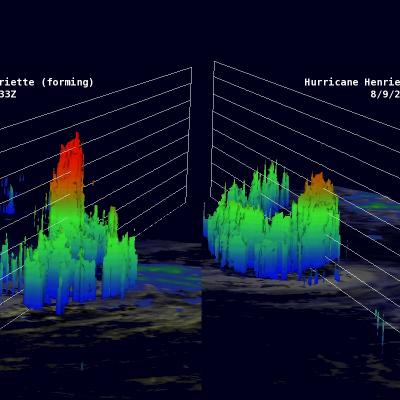TRMM Sees Tropical Storm Lorena
The development of tropical cyclones in the Atlantic Ocean basin has been very slow recently but tropical cyclones have formed in the Eastern Pacific Ocean at a near normal or greater than normal pace. Sixteen tropical cyclones per season usually form in the eastern Pacific and tropical storm Lorena is number fourteen. The TRMM satellite flew above this most recent Eastern Pacific tropical storm on September 6, 2013 at 0824 UTC. TRMM's Microwave Imager (TMI) and Precipitation Radar (PR) data show that Lorena did not contain large areas of precipitation. Those data do show that Lorena had one


